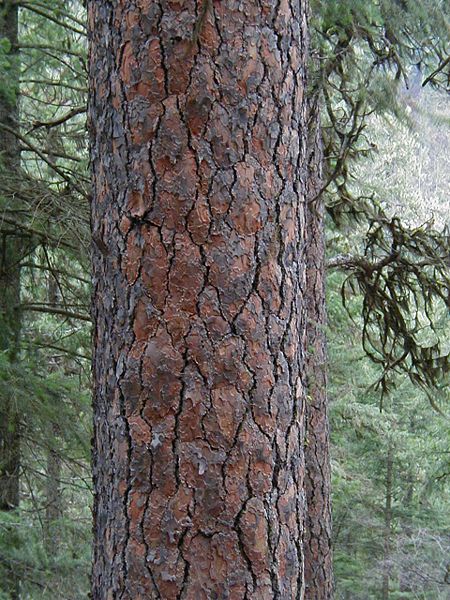| PSC 2620: Woody Trees and Shrub | Course Home | Week 13 |
Pinus ponderosa - Ponderosa Pine
Plant Viewer
 |
 |
| The bark of Pinus ponderosa is reddish-brown with nearly black fissures. | The branches are densely covered in foliage. Image: Walter Siegmund |
 |
 |
| The needles are 5-10 inches long and have a sharp point at their end. They are arrayed around the stem. Image: J.S. Peterson, USDA | The cones are an elongated ovoid and have small thorn-like protrusions. Image: Darren Kirby |
Plant Description
Pinus ponderosa, or Ponderosa Pine, is a large and fast growing coniferous evergreen tree growing 60-100 feet high and 25-30 feet wide. It has a narrowly pyramidal form when the tree is young, and as it matures the form becomes more upright in habit with a bluntly rounded top. The stem is very straight and the branches on mature tree are often held high off of the ground. The branches are typically held straight out from the trunk, but some may exhibit a drooping character. It prefers to grow in rich, well-drained soil with adequate moisture. It can tolerate our dry alkaline soils, but performs better in more moist acidic soils.
The bark is an interesting color contrast with the ridges being an brownish-orange color while the valleys are nearly black. The needles are true green and held in clusters of 3 needles. They are very long (5-10 inches) and end in a sharp point. The cones of the tree can occur singly or in clusters and are 3-6 inches long and shaped like an elongated egg. The tips of scales have a small protrusion similar to a thorn. When the cone opens it has the very typical pinecone look.
Landscape Use
Pinus ponderosa is a truly impressive tree, however its mature size makes it an unsuitable specimen for use in small or even moderately-sized sites. It is best used in large campuses and public parks, where it is in better scale to its surroundings.
It is popularly used along highways, especially in Pacific states, where it creates a sheltered and picturesque screen and setting. It is also useful as part of a larger wind break, or for erosion control.
Points of Interest
Pine beetle is becoming a major problem in the western United States, and has reached epidemic levels in several areas of the western coast.